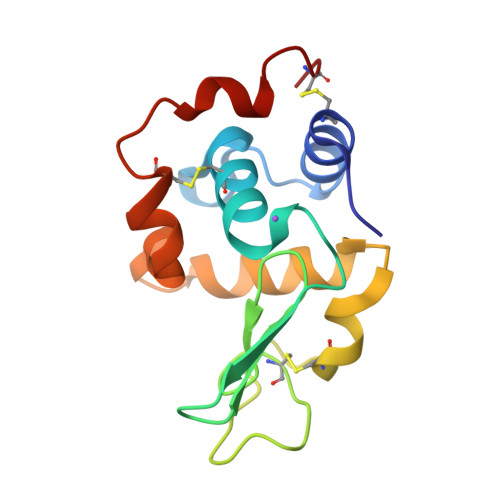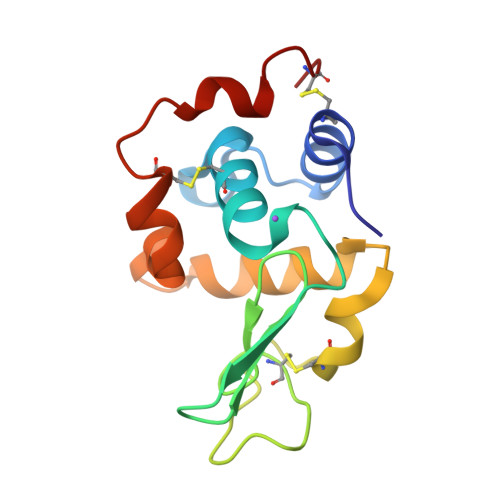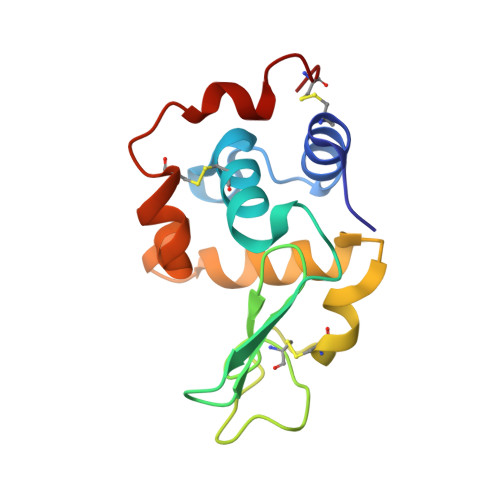Buried water molecules contribute to the conformational stability of a protein
Takano, K., Yamagata, Y., Yutani, K.(2003) Protein Eng 16: 5-9
- PubMed: 12646687
- DOI: https://doi.org/10.1093/proeng/gzg001
- Primary Citation of Related Structures:
1IX0 - PubMed Abstract:
This study sought to attain a better understanding of the contribution of buried water molecules to protein stability. The 3SS human lysozyme lacks one disulfide bond between Cys77 and Cys95 and is significantly destabilized compared with the wild-type human lysozyme (4SS). We examined the structure and stability of the I59A-3SS mutant human lysozyme, in which a cavity is created at the mutation site. The crystal structure of I59A-3SS indicated that there were ordered new water molecules in the cavity created. The stability of I59A-3SS is 5.5 kJ/mol less than that of 3SS. The decreased stability of I59A-3SS (5.5 kJ/mol) is similar to that of Ile to Ala mutants with newly introduced water molecules in other globular proteins (6.3 +/- 2.1 kJ/mol), but is less than that of Ile/Leu to Ala mutants with empty cavities (13.7 +/- 3.1 kJ/mol). This indicates that water molecules partially compensate for the destabilization by decreasing hydrophobic and van der Waals interactions. These results provide further evidence that buried water molecules contribute to protein stability.
Organizational Affiliation:
Institute for Protein Research, Osaka University, Yamadaoka, Suita, Osaka 565-0871, Japan. ktakano@mls.eng.osaka-u.ac.jp



















